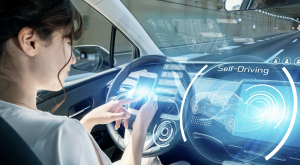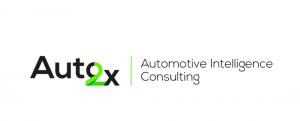Un-Supervised driving (Level 3-4) needs much more than Autonomous Driving Regulation for safe deployment, says Auto2x
Global harmonization of regulation and standards, and consumer education is needed to avoid abuse and misuse of Level 3 systems for safe Un-Supervised driving
LONDON, UK, November 7, 2022 /EINPresswire.com/ -- Auto2x’s report Regulatory Roadmaps to Level 3 – 4 Autonomous Driving, Automotive Cyber Security, V2X & AI, analyzes the challenges the automotive industry faces and provides recommendations for regulatory compliance, consumer education and innovation.
THE MONITORING TASK OF DRIVING IS CHANGING BUT THE LACK OF CLEAR COMMUNICATION AND GUIDANCE CONFUSES CONSUMERS
Systems move from assistive (ADAS) to conditionally (SAE Level 3) and fully unsupervised. New launches of Level 3-Conditional automation from Honda, BMW, Mercedes-Benz and other carmakers in Japan and Europe, will allow the transfer of vehicle control from the driver to the system and vice-versa.
The focus of regulation has been on the amendment of Regulation No.79 to unlock Level 3-Conditional automation, where the system can monitor but drivers have to take over in case of an emergency, which is safe and adds value to owners. After almost 3 years in the making, the amendment of UNECE Reg. No.79-Steering Equipment and the introduction of Automated Lane Keeping Systems (ALKS) allow Level 3 in countries adopting the new rules. The ALKS regulation was set to apply to 60 countries including the UK, Japan, and EU member states from January 2021, to enable the safe introduction of ‘L3’ automation features in certain traffic environments.
But the challenges related to Level 3 are still not resolved. Safe handover of control, perception redundancy, determination of liability and global harmonization of regulation is still unclear.
While the L3 system is active, the driver could be distracted (e.g. reading, watching) but cannot move away from the seat or sleep since he/she is still the backup and has to be alert in case of a take-over request from the vehicle. More details on what exactly the driver is allowed to do are required, which is not covered by ALKS. Discussion for amendments has already started in the UK whereas Germany has specified that drivers should not trust the ADS blindly in L3 in its latest draft bill coming in Autumn 2017.
WHO IS LIABLE FOR A CRASH WHEN LEVEL 3 IS IN “ACTIVE MODE”?
In Level 3, the transfer of vehicle control from the driver to the Automated Driving System has implications for the determination of liability since the driver is still the ultimate backup. This also creates insurance challenges for higher levels of automation. More specifically, since the Liability framework for Level 3 is still largely unconfirmed, insurance tools are not in place for this level of automation. This challenges the development of Level 2-Autonomous Driving and Level 3 features by manufacturers.
THE VEHICLE AUTOMATION MIX WILL CHANGE THUS MORE GUIDANCE IS NEEDED IN THE FORM OF COMMON, INTERNATIONAL AD STANDARDS & MITIGATE SCEPTICISM OF HIGHER VEHICLE AUTONOMY
With manually-operated vehicles, conditionally and fully-automated cars with or without driving controls (i.e. driverless pods) present simultaneously on the road over the next decade, clear requirements for drivers are needed.
We expect these requirements to come as part of the amendment of national traffic laws. In addition, further consumer education over the capabilities and limitations of features is required from the industry as a whole, i.e. from car manufacturers to dealerships, driving licences certifications, etc.
The lack of harmonization of Autonomous Driving regulation across major car markets remains the key roadblock to the deployment of L3-4. Carmakers and developers of autonomous driving technology face compliance requirements that are different across major car markets. For example, for countries such as Japan, China, and the EU members that are signatories of the UNECE regulation, there is no framework for type approval of Level 4.
We see the need for adequate education of drivers, from both carmakers as well as rating associations such as the NCAP to help them understand their legal requirements and avoid consumer confusion over driver responsibilities or even misuse resulting from “mode confusion”.
TABLE OF CONTENTS
Executive summary
1. Autonomous Driving regulation for SAE Lv.3 & Lv.4 systems
2. Active Safety Regulation for ADAS L1-L2 & NCAP Lv2 rating
3. Data recording & liability in SAE Level 3-Conditional Automation
4. Automotive Cyber Security Regulation in major car markets
5. Vehicle-to-Everything V2X: V2V-V2I Regulation
6. Regulation for Artificial Intelligence in Automotive
Appendix: Overview of regulations and legislation in this report
Auto2x, Automotive Intelligence & Consulting
Auto2x Ltd
+44 7825 686532
email us here


